Visiting Sri Lanka, I enjoyed seeing wonderful wildlife and some truly amazing iconic temples.
It had never occurred to me to visit Sri Lanka until one of my wildlife watching mates suggested it. Until then, I just knew Sri Lanka was once called Ceylon and is famous for tea. Not that I drink tea. After a trip there in October, I can tell you it is well worth a visit – both for wildlife viewing and cultural sightseeing.
Wildlife in Wilpattu
There are several national parks and other viewing spots in Sri Lanka. The largest park is Wilpattu, which is where we went. Wilpattu is famous for sloth bears and leopards – which are always described as ‘elusive’ just in case you don’t see them. Luckily we did.
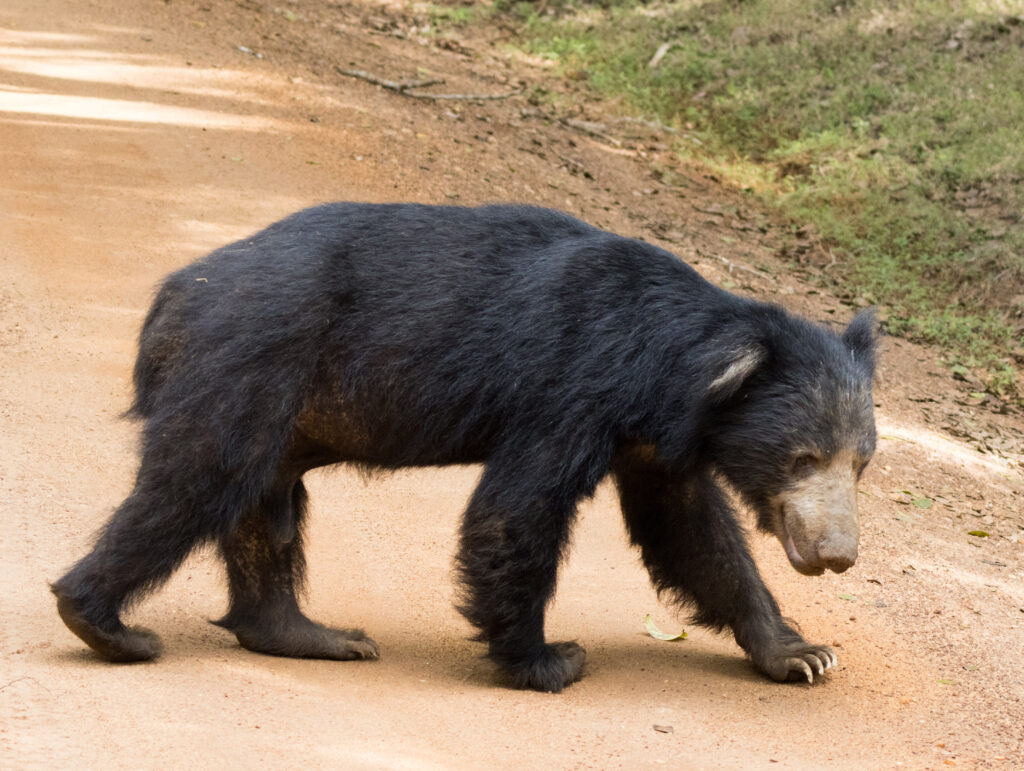
On our first day, we saw a sloth bear avidly digging into a termite mound and gleefully sucking up its contents. It was our only sighting of a sloth bear, but a truly memorable one. He wasn’t remotely perturbed by our presence, so we stayed for a while. A great opportunity to put my new camera to its test. It passed.
Leopards were more of a challenge, not least as it was the beginning of the rainy season, and they like the rain about as much as my two cats do. Persistence paid and on Day Two we saw one for a few seconds. These brief sightings were repeated, one each day for the next two days. The best was saved to last when, on our fifth and last day, we saw a female hiding in the bushes. She finally appeared and strolled past us nice and slowly. Hurrah!
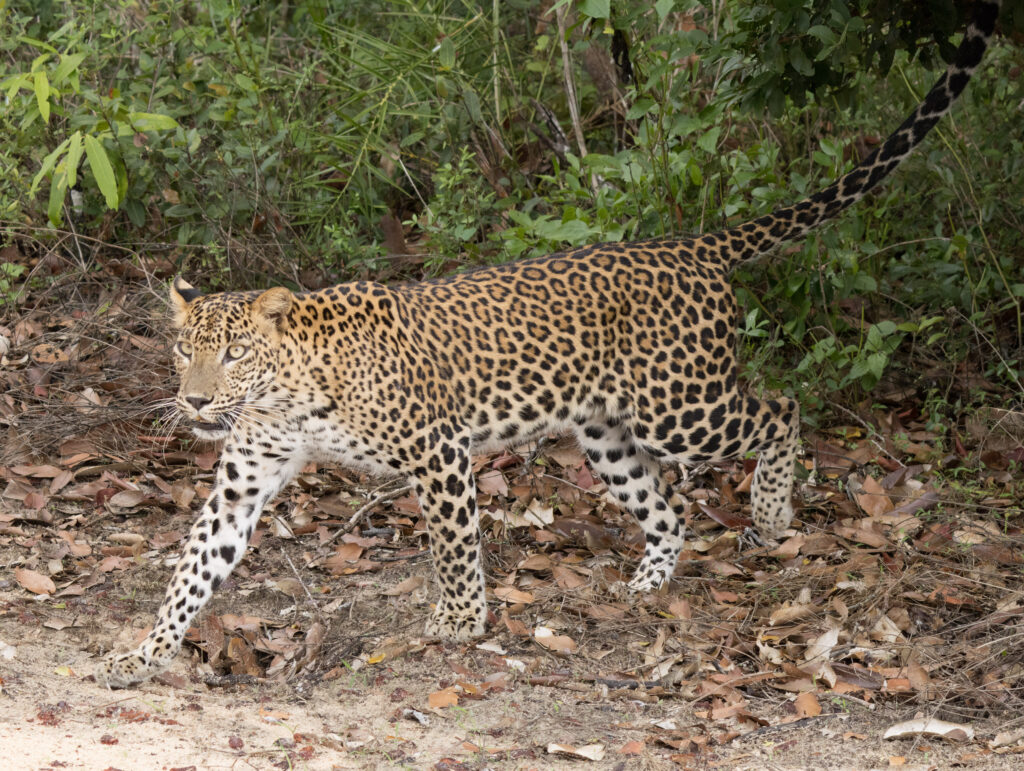
Wilpattu is the largest park in Sri Lanka, although we only had access to a portion of it. The part we were in was a mix of beautiful forest and glorious lakes. Being in the forest means you can’t go off-road and the dense vegetation means you don’t see the abundance of animals you might spot in the open plains of Africa. But when you do spot them, they are very close.
A major advantage was that, unlike many parks, Wilpattu wasn’t crowded so when we stopped to watch both the bear and the female leopard, there were only a couple of other jeeps around. It also helped that we were there for five days and nights; most visitors only stay for one or two so are likely to see less than we did – although that also depends on the time of year.
We saw a good selection of other animals too: deer, water buffaloes, crocodiles, mongoose, tortoises, turtles, monitor lizards, squirrels of various sizes, and one or two elephants. There were many monkeys – macaques and grey langurs – plus the purple leaf monkey who was less easy to spot.
There were also lots of birds, including falcons, different eagles, fish owls, storks and plenty of peacocks. There’s always something exciting about seeing birds of prey and this is a good time of year to see them up close, often perched on branches. I also got very excited by the fruit bats. Some trees would have dozens of them hanging upside down. I love the way they stretch out their wings, then wrap their wings right around themselves.
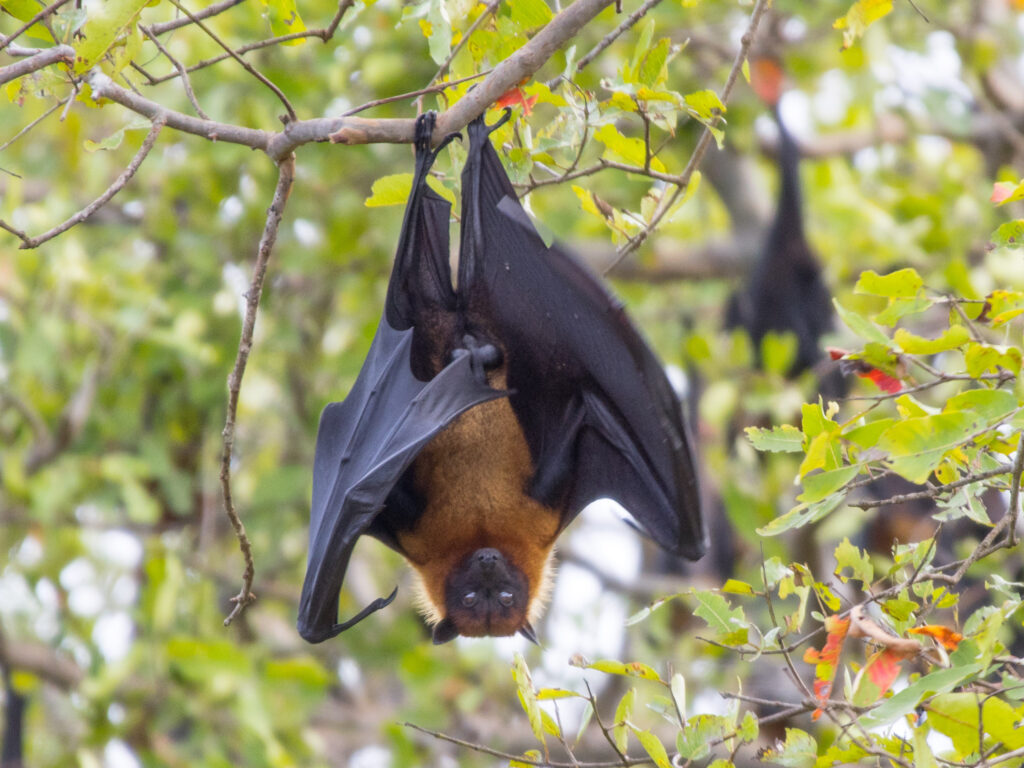
And let’s not forget the smaller beings, such as various lizards and frogs. One night when it rained, the frogs were calling so loudly it kept me awake for hours. Not that I minded.
I’ve included a few photos here. There are lots more on Instagram: https://www.instagram.com/allihill.ah/
Yet More to See
The next phase of the trip was sightseeing, especially the Cultural Triangle, but I’m happy to report that there were lots more animals and birds to spot there too.
Whichever road you travel on, you are bound to see stray dogs. They are everywhere and everyone is used to them; any traffic just slowly drives round them. We did not leave the monkeys behind either. They were a regular feature at all the temples we stopped at.
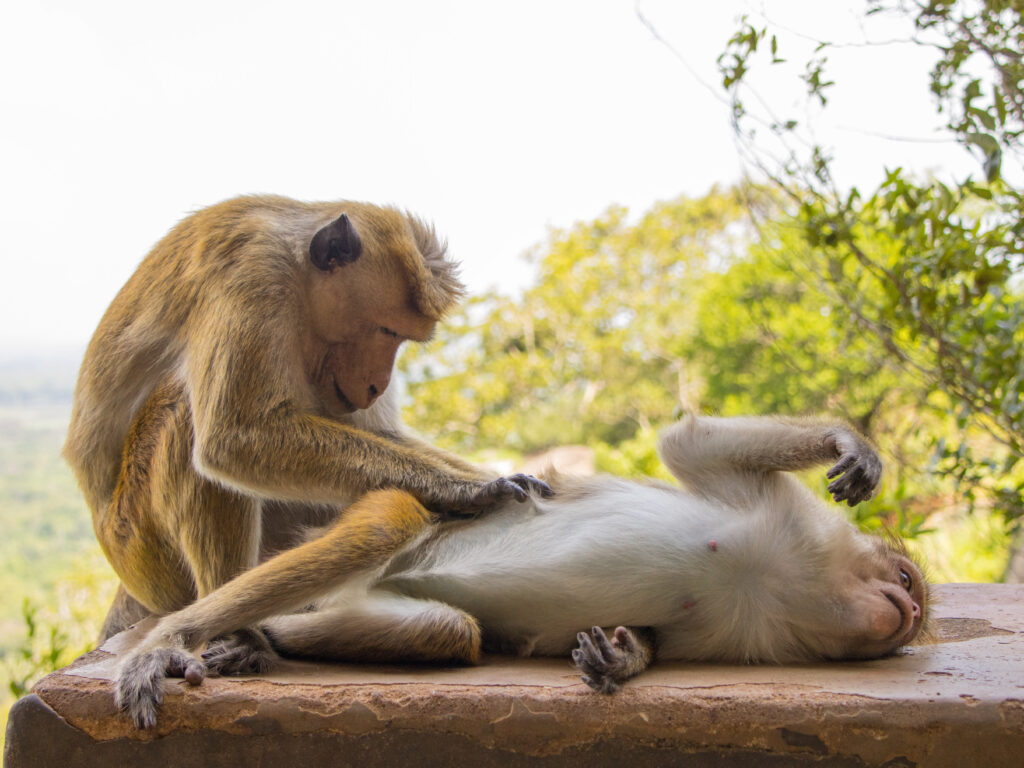
Elephants were equally present in this part of the trip. Elephants are a key feature of both Buddhist and Hindu religion in Sri Lanka. They are symbols of strength and courage and bring good luck and prosperity. Some temples keep live elephants and many symbolic ones appear in works of art, in statues, tapestries and other formats. However, in the wider Sri Lankan society, some live elephants are forced to work or carry tourists. As in other countries, efforts are being made to stop such controversial practices.
Lots of Temples Too
A key feature of the temples are statues and images of Buddha – often reclining. Temples also consist of dome shaped memorial buildings – the dagoba – and a bo tree. We did a quick tour of the Cultural Triangle to take in some of these temples, ruins and royal palaces. As well as Buddhist temples we saw many exotic Hindu temples. Each temple is different and each one was quite stunning.
First stop was Anuradhapura, which dates back to the 4th Century BC when it was at the centre of Sri Lankan power; followed by Polonnaruwa. Both are UNESCO World Heritage Sites, and both have vast ruins to explore, and we had great guides to give us the history.
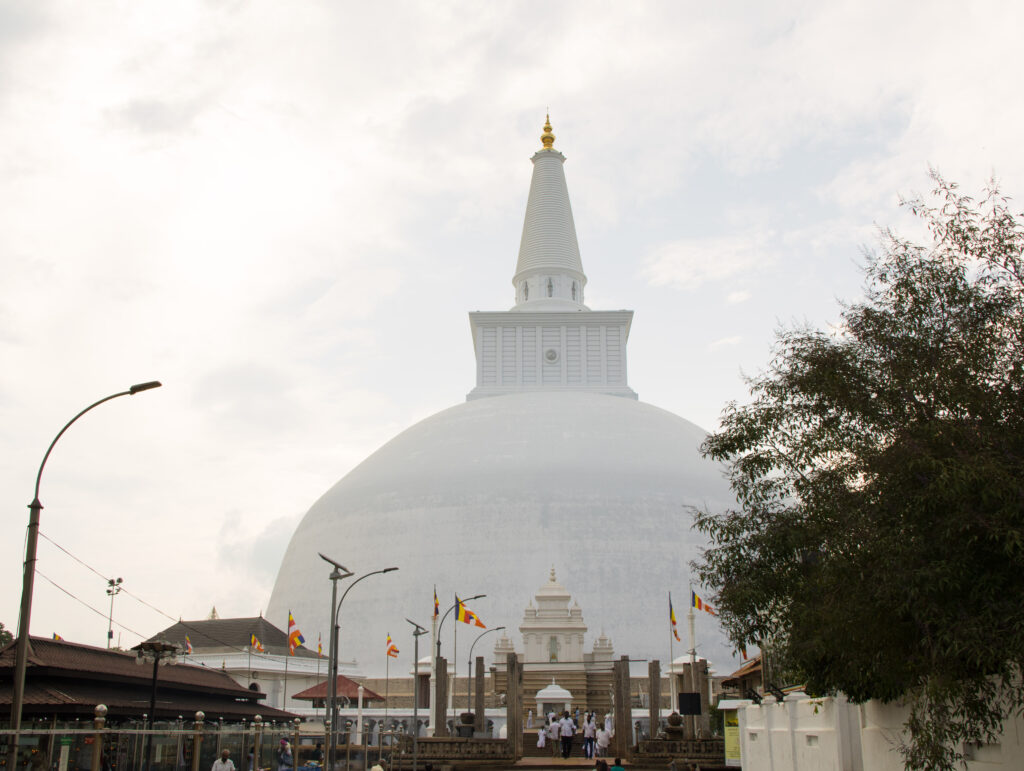
For me, the best sight – and site – of reclining Buddhas was our next stop, the Dambulla Cave Temples; this is also a UNESCO World Heritage Site. There are five caves filled with statues and murals, some centuries old. It is simply stunning.
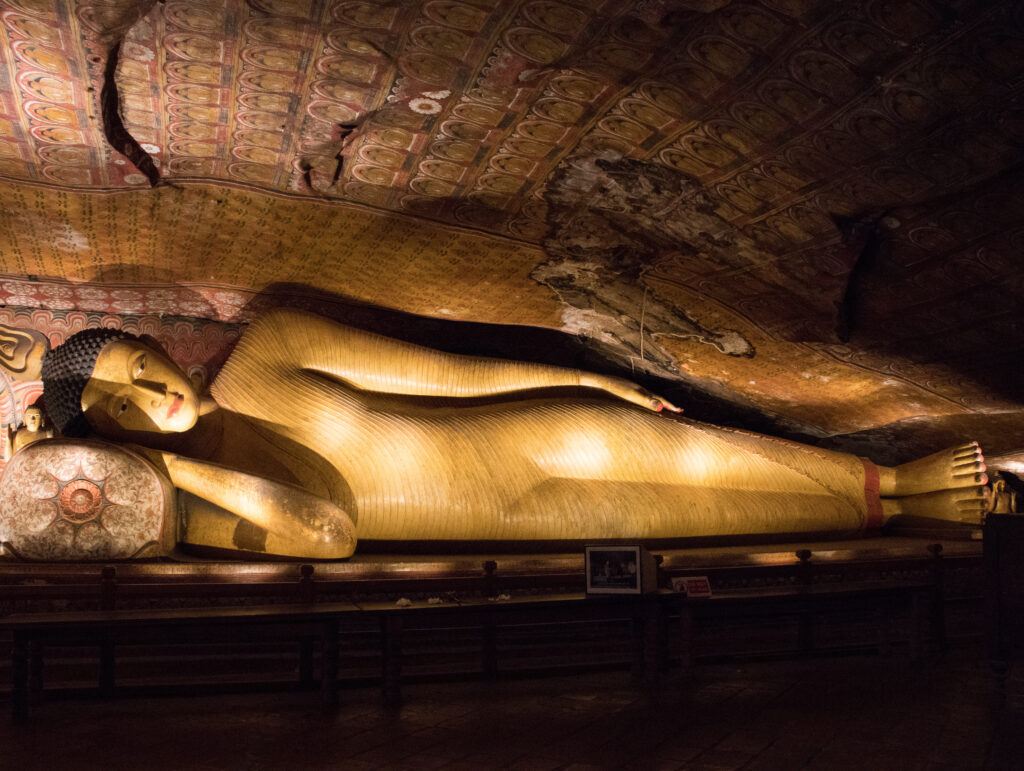
Meanwhile, I had also managed to climb Sigiriya Rock, also known as Lion’s Rock. Yes, it’s a UNESCO World Heritage Site too. At the base of the rock are water gardens which are well worth a wander. Then, on the climb up, is the lion platform which once held a huge lion carving. Only the paws remain but, as a cat lover, I was delighted to see them. I finished climbing the 1,123 steps to reach the summit and was rewarded with wonderful views and a chance to explore the ancient ruins dating back to AD477.
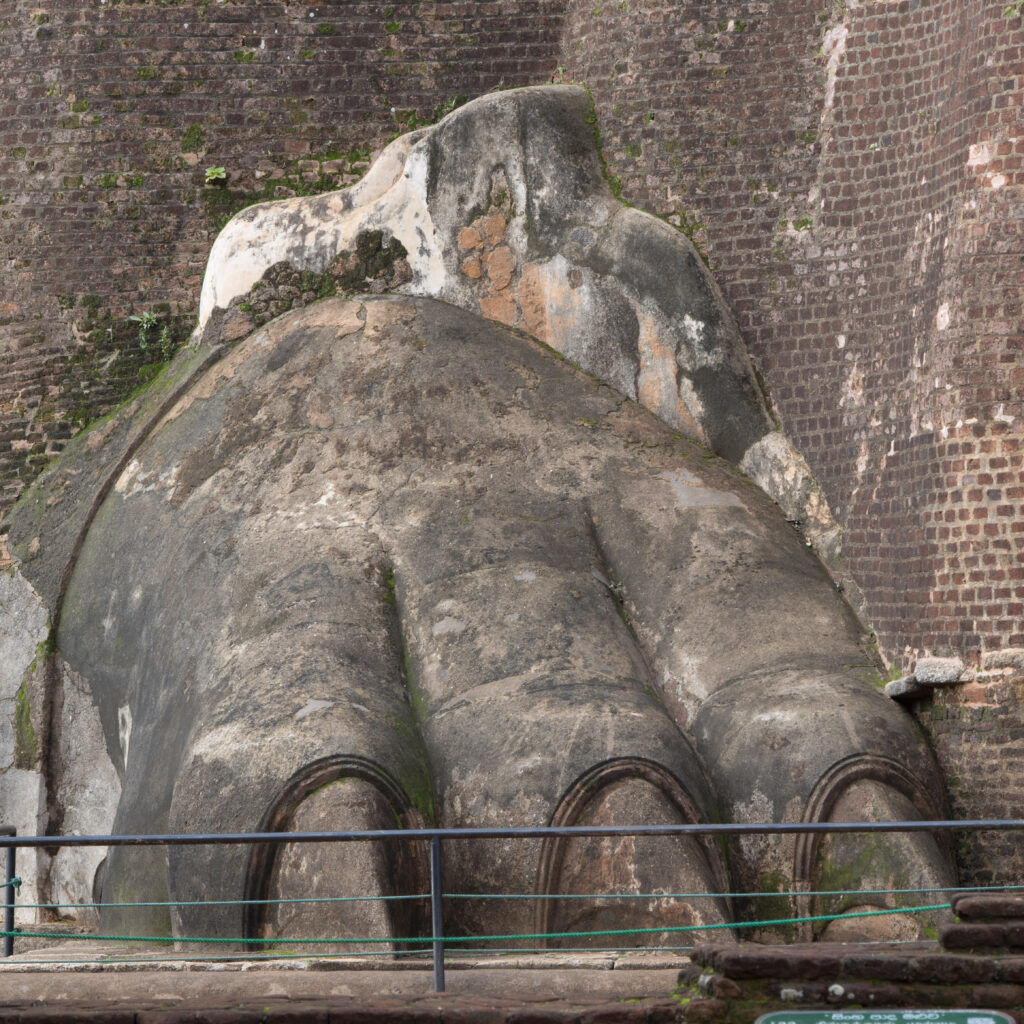
Moving further south, we came to Kandy, yet another iconic destination and UNESCO World Heritage Site. Kandy has been the home of the Tooth Relic since 1592. This is Buddha’s tooth which is kept in a chamber in the temple in a series of 7 caskets. Only the outer casket is visible to visitors – but it was good to get just that glimpse. A major festival called the Esala Perahere, takes place each summer in Kandy in honour of the tooth relic. It lasts 10 days. The highlight is a procession in which a revered elephant carries a replica of the tooth relic. Once more, elephants take centre stage.
On our last day, we took a quick Tuk Tuk tour of the commercial capital Columbo to get a feel for it. Tuk Tuks competing with cars, trucks and other traffic on extremely crowded roads was an interesting experience! Again, the highlight was seeing yet more examples of Buddhist and Hindu temples.
A Rich - and Poor - Country
From Sigiriya Rock and other viewing points right across the land, ‘tanks’ or reservoirs can be seen – there are hundreds of them. They are used to irrigate crops during the drought periods. Some of these, and a system of underground canals, date back to ancient times. The enterprising Sinhalese were the first to develop such systems. Recent years have seen a further increase in the number of tanks being built, adding to the natural richness of the land. Throughout our travels I was struck by the verdant vegetation and how fertile the land seems.
In Kandy and elsewhere, there are lots of craft works to buy, and even gemstones if you want to treat yourself. The prices were OK but not overly cheap. Tourists pay higher prices for most things – this is what the locals jokingly call ‘white skin tax’. The locals buy their food and other goods elsewhere at much lower prices. Visiting the local markets was another photo op.
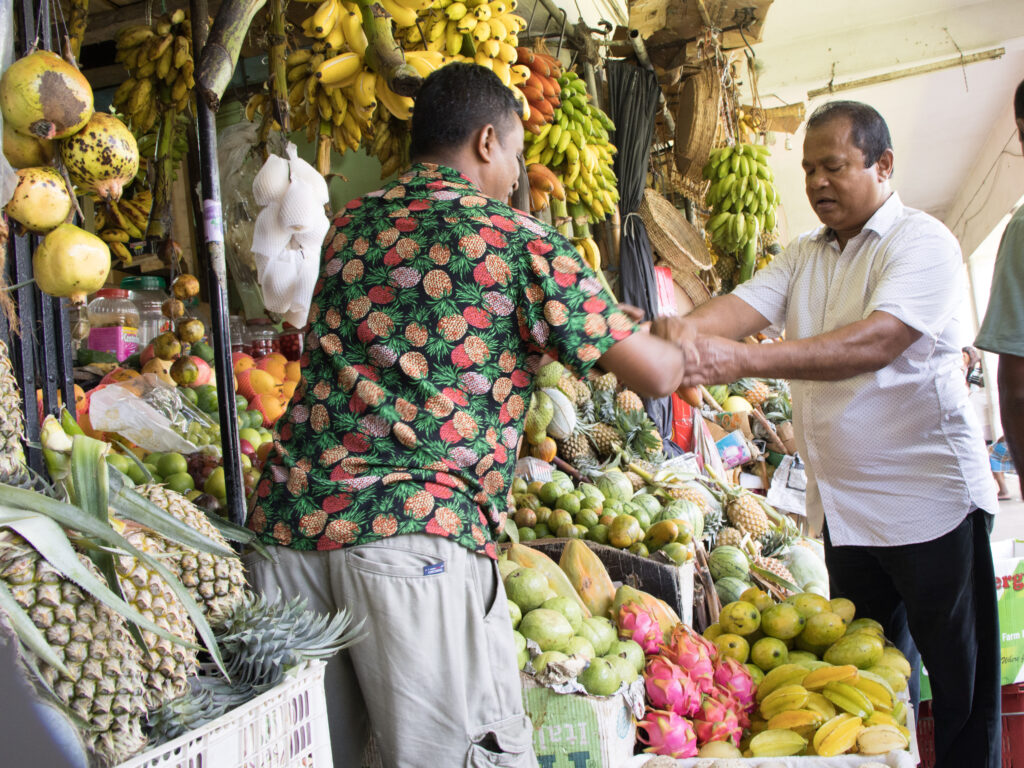
One sad aspect of the trip was talking to Sri Lankans who repeatedly said that they were really suffering financially, often doing two jobs. They usually added that this is in stark contrast to the country’s totally corrupt wealthy leaders. Yet when people talked about British Rule, they were keen to point out the benefits it brought. I gather we introduced tea, rubber and coffee, and helped develop the road and rail networks and legal and education systems. Even so, I found myself apologising for our colonial past.
It was a great trip, and I really would recommend Sri Lanka. As well as the wildlife, and the culture (which I have only briefly touched on), there are beautiful beaches and lots of other activities to enjoy. It’s a fascinating country, the people are lovely, and the food is good too – if a little spicey even when toned down for us Brits!
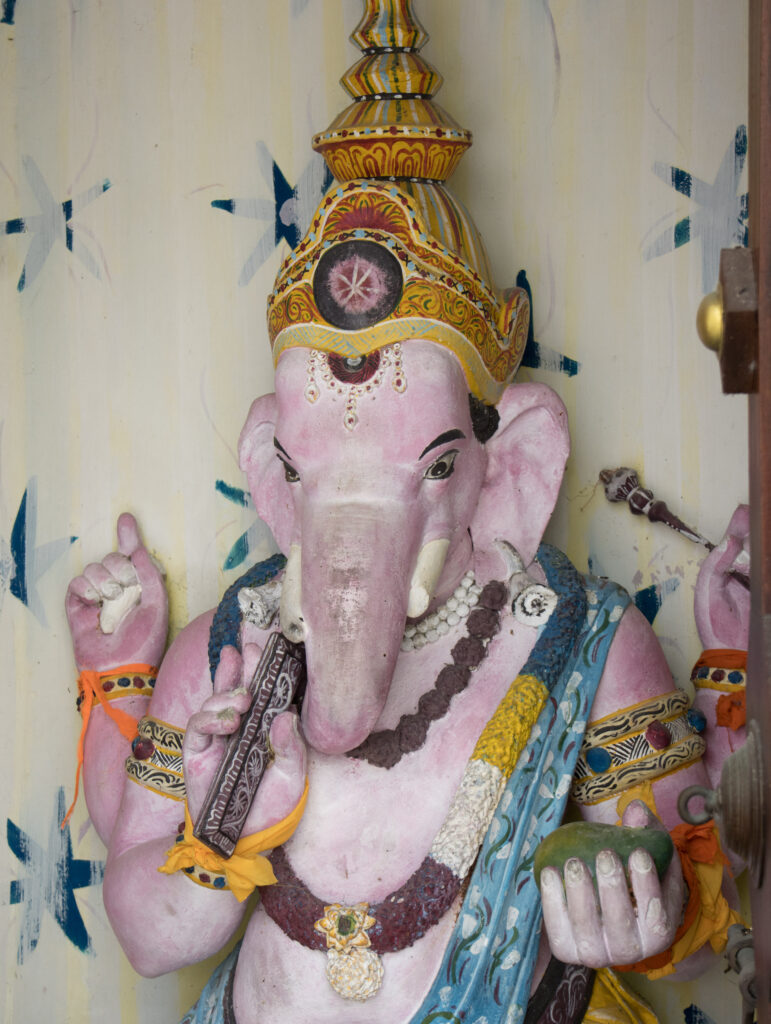
Don’t forget to check out the other photos: https://www.instagram.com/allihill.ah/
Thanks to:
Sue and Angie for suggesting Sri Lanka and being excellent spotters and brilliant companions (as always) at Wilpattu.
Bernie for joining me for the full trip and asking lots of question about Buddhism while I took the photos.
Rikki Poynton at Scott Dunn for dealing with the booking and all other details.
The female leopard for finally appearing!
